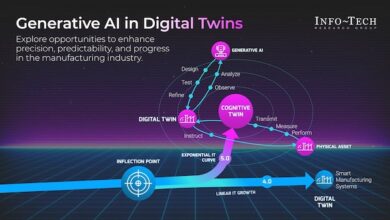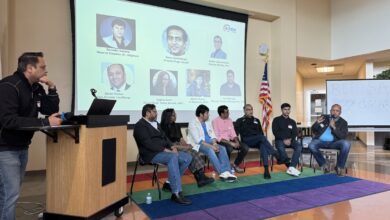Tax And Legal Professionals Warm Up To AI, But Trust Is Still An Issue

You know a technical topic like generative artificial intelligence (GenAI) has officially crossed over into the mainstream when a dinner conversation with old friends – none of whom works in tech – quickly turns to personal encounters with large language models. In my case, one friend was rhapsodizing about how easy it had been to write a college recommendation for a colleague’s daughter using ChatGPT, another was actively using co-piloting tools provided by his employer to create PowerPoint slides, and another was transcribing all of her virtual meetings using GenAI. All three felt like they had seen the future.
(Photo by ANDREJ IVANOV / AFP) (Photo by ANDREJ IVANOV/AFP via Getty Images)
Despite these pockets of enthusiasm among those who’ve actively been experimenting with GenAI for varying tasks, there is still a shadow of doubt that hangs over the professional services sector when it comes to real-world business applications for the technology. A recent Harvard Business Review article on the topic noted that many businesses, large and small, are still struggling to figure out how to integrate traditional AI, let alone GenAI. Meanwhile, studies have suggested that upwards of three-quarters of companies that have implemented AI for limited functions have struggled with company-wide integration.
Inside the Mind of the AI End-User
While that hesitation is the part of any innovation cycle – particularly in cases where the technology receives as much hype as GenAI – it does not fully capture what’s going on inside the minds of the professionals who will be the biggest users of this technology. In fact, when we peel back the layers of what professionals are really thinking about GenAI, we find a much more nuanced set of variables that includes a great deal of enthusiasm, tempered by some very real trust issues that still need to be resolved.
Thomson Reuters recently surveyed 1,128 professionals working in the legal, tax & accounting, global trade, risk, and compliance industries to better understand how they feel about the prospect of generative AI in their day-to-day workflows. We found that a large portion of respondents (44%) said they were hopeful or excited about Gen AI’s introduction into their industry, while more than one-third of respondents (35%) said they were hesitant, and 18% said they were concerned or fearful. Of the portion that said they were hesitant, 20% said they felt that way due to accuracy concerns, 18% said they were skeptical Gen AI can deliver promised results, and 16% were concerned about over-reliance.
However, we found that 81% of professionals felt that GenAI could be applied to their work and 54% of professionals felt GenAI should be applied to their work. Interestingly, these numbers were both up slightly from August of 2023 when last asked these same questions.
Putting Trust at the Center of GenAI Innovation
What these findings tell us is that the professionals at the center of the GenAI revolution are a lot like my friends at dinner. They see the potential and each time they have an encounter with the technology they get a little more comfortable with it, and a little more impressed with what it can do, but when it comes to high-stakes, professional-grade work like preparing legal or tax research or drafting legal documents, there is an additional threshold of trust that still needs to be addressed.
Ultimately, addressing that trust will need to come down to transparency on the part of technology providers into where the information in their GenAI models is being sourced and how it is being cataloged and used to produce its results. I think back, for example, to my friend who used ChatGPT to write a recommendation letter. She actually joked when she told the story: “I don’t know how it did it, but I don’t care; it saved me an hour of staring at a blank screen trying to think of what to say.” That lack of scrutiny might be OK for a recommendation letter or an informal email, but it won’t for the needed scrutiny for a legal brief or a tax filing where absolute certainty on accuracy, data lineage and precedent are essential.
For the companies at the center of this GenAI transformation, whether they are developing new AI-driven solutions or evaluating which ones to incorporate into their businesses, it is important to recognize that the enthusiasm on the part of users is there, but their trust needs to be earned. That will come with time, yes, but it also needs to come in the form of transparency into the source materials being used and the logic behind using them. In this way, professional users of GenAI are a lot like third-grade math teachers. It’s not enough for them to see that the algorithm got the answer right; they want to see the work too.



